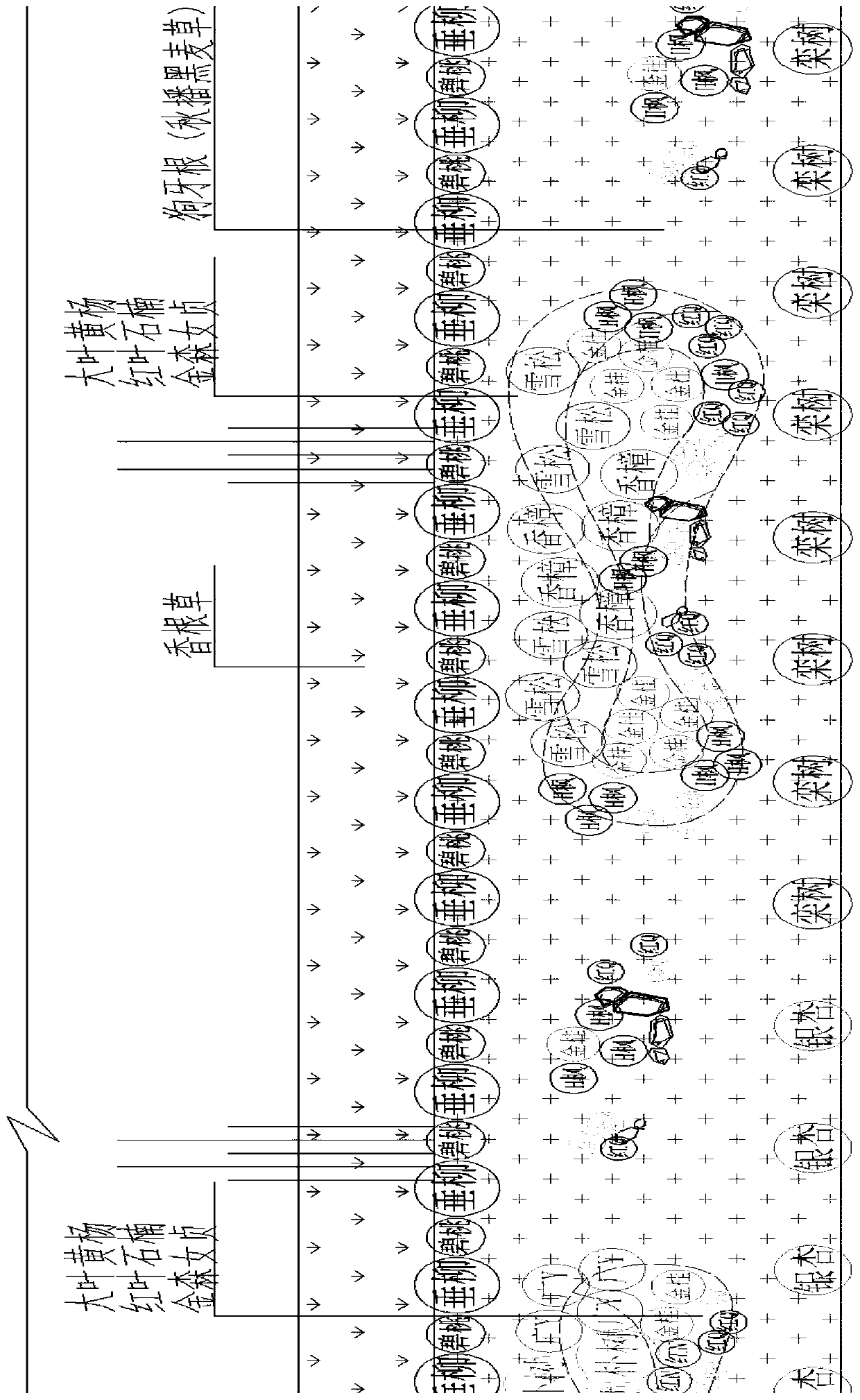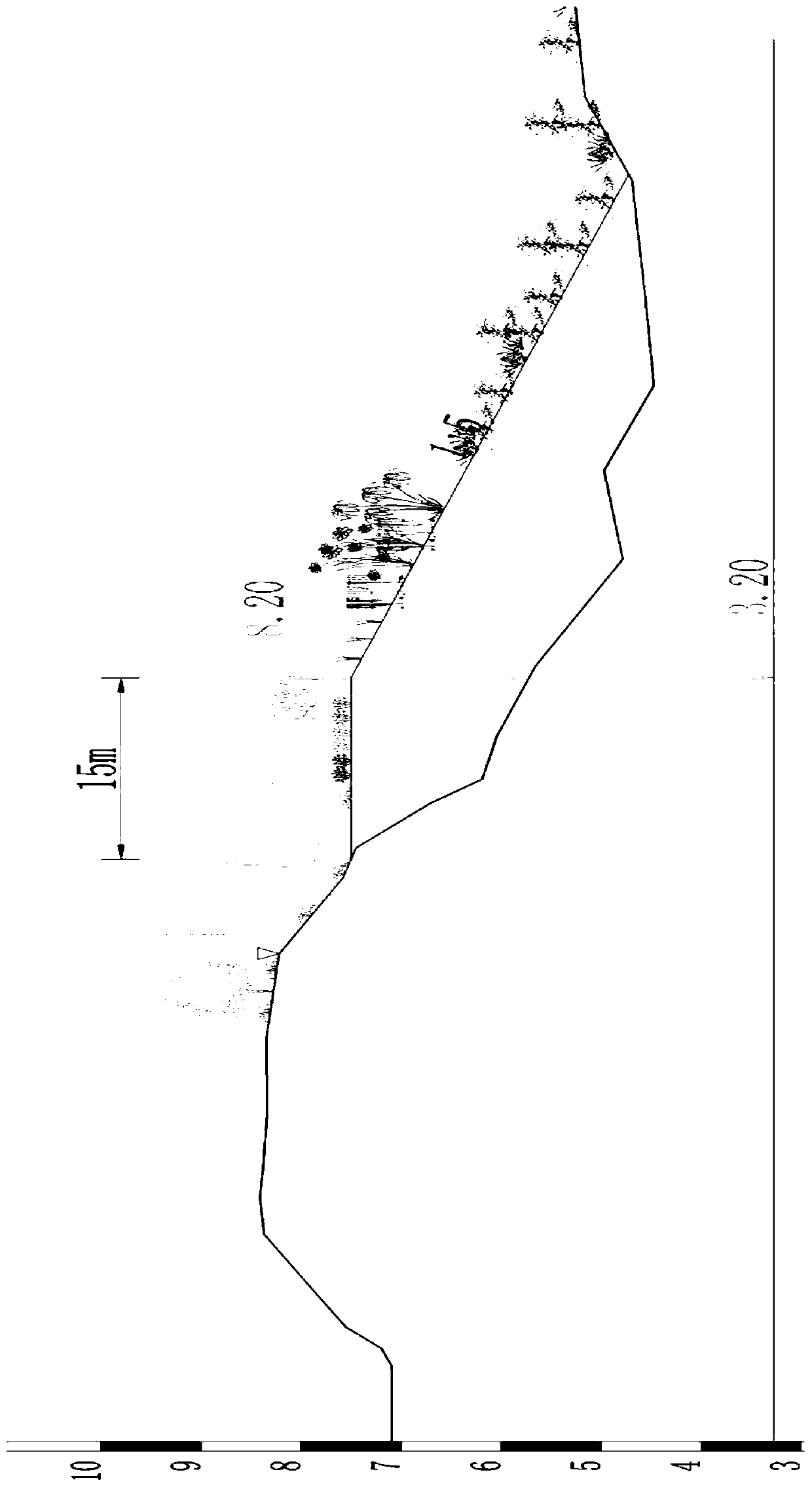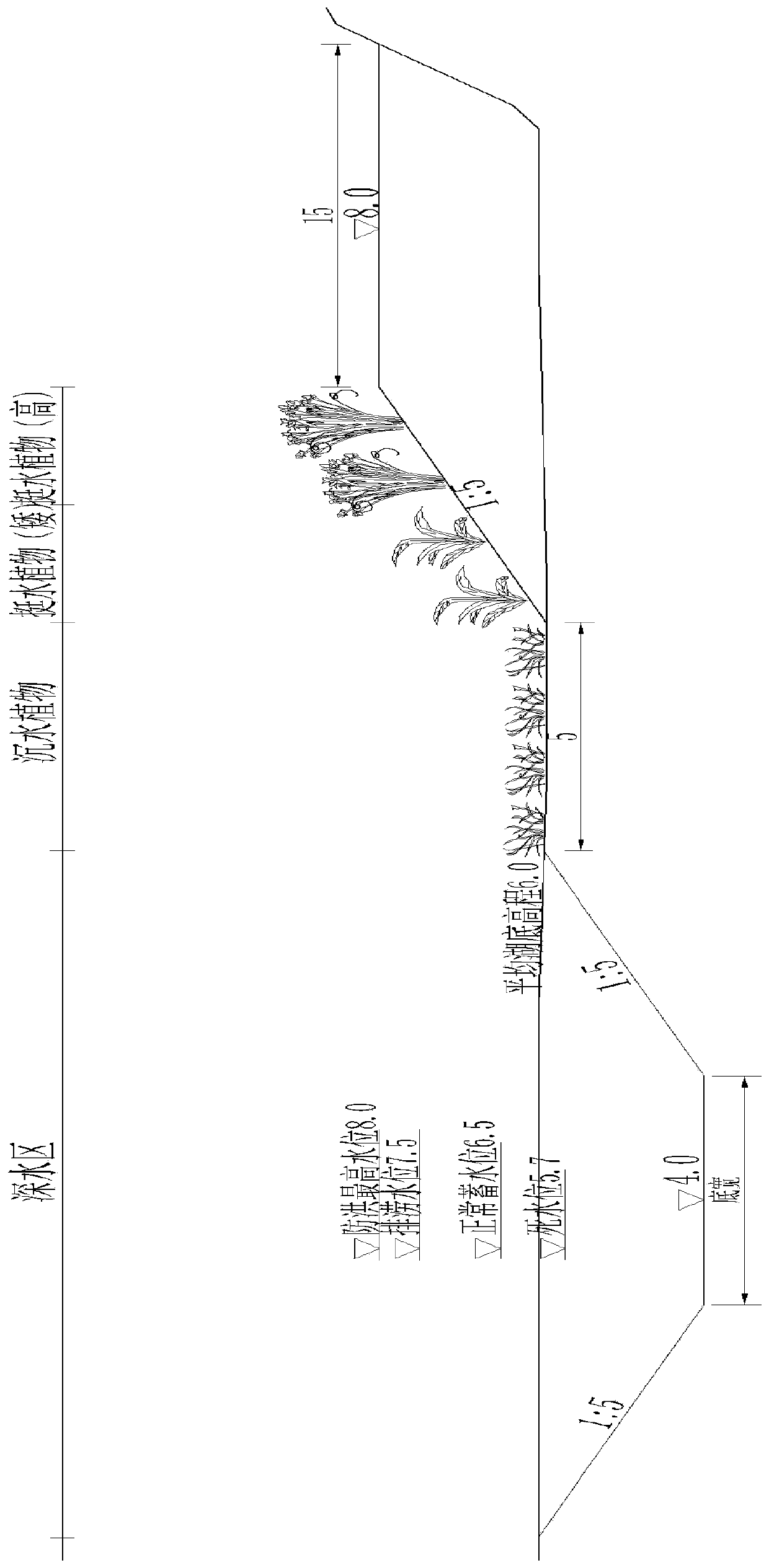Ecological restoration method for steep lakeside zone of polluted lake with shallow water type bottom mud
A technology of ecological restoration and sediment, applied in water/sludge/sewage treatment, polluted waterway/lake/pond/river treatment, chemical instruments and methods, etc. The effect of reducing sediment pollution and stable and lasting ecological landscape
- Summary
- Abstract
- Description
- Claims
- Application Information
AI Technical Summary
Problems solved by technology
Method used
Image
Examples
Embodiment
[0024] Taking the lakeside belt of Baima Lake as an example, the ecological restoration project is carried out:
[0025] The starting point of the range is at the mouth of Lianghe River in Hongze District, Huaian City, and the end point is at the junction of Ruanqiao River in Jinhu County. The area facing the open water is dredged 50-200 meters from the shore to the lake area, with an average dredging depth of 0.5 meters. The dredging area is about 1.06 million square meters, the dredged earth volume is about 1.1 million cubic meters, and the phytoremediation area is about 1.21 million square meters.
[0026] 1. Repair scope
[0027] Along the 34.4km lake road around Baima Lake, the ecological restoration of the lakeside zone is carried out within 50 meters of the upstream slope. From the land area to the waters near the lake, a vegetation belt distribution of trees and shrubs-grass vegetation-wet vegetation-emergent vegetation-submerged plants has been formed. .
[0028] 2...
PUM
 Login to View More
Login to View More Abstract
Description
Claims
Application Information
 Login to View More
Login to View More - R&D
- Intellectual Property
- Life Sciences
- Materials
- Tech Scout
- Unparalleled Data Quality
- Higher Quality Content
- 60% Fewer Hallucinations
Browse by: Latest US Patents, China's latest patents, Technical Efficacy Thesaurus, Application Domain, Technology Topic, Popular Technical Reports.
© 2025 PatSnap. All rights reserved.Legal|Privacy policy|Modern Slavery Act Transparency Statement|Sitemap|About US| Contact US: help@patsnap.com



